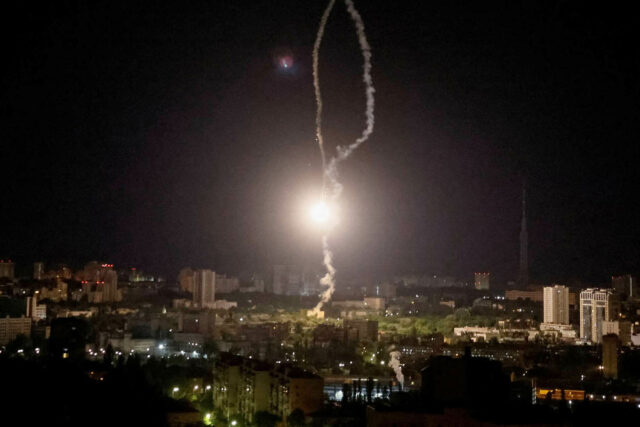Pavel Luzin

For its part, Ukraine regularly publishes available statistics of each Russian missile attack, including the number and types of missiles (if available) and the number of fired and intercepted missiles. However, these statistics usually do not include missiles that detonated immediately or soon after firing. Overall, it is likely that the number of such missiles is insignificant. On January 3, the Ukrainian Armed Forces published an assessment of Russia’s missile storage and production rates (Twitter.com/oleksiireznikov, January 6). Based on this data, the picture of the Russian arsenal of cruise, tactical ballistic and air-launched missiles with a range over 300 kilometers after the latest attack on May 18 is estimated as follows:
Of course, Ukraine may have revised its assessment of production rates since January 2023, but that re-assessment has not yet been published in open sources.
However, this author’s estimates of Russia’s missile storage on the eve of the full-scale invasion against Ukraine and of domestic production rates differ from the official Ukrainian data (Data for this assessment was compiled from the following sources: Kommersant, October 24, 2006; NPO Saturn, 2016; Voennaya mysl’, No. 4, 2019; ODK-Saturn, April 4, 2018; Kommersant, September 5, 2018; Dfnc.ru, January 27, 2019; Zvezda, January 31, 2020; Zakupki.gov.ru, 2022; ODK-Saturn, 2022.). Therefore, the actual picture of Russia’s missile arsenal could be as follows:
Despite the fact that this assessment of the actual production rates of cruise missiles in Russia is much lower than the Ukrainian one, the amount of remaining missiles in Russian storage is still higher for this alternative evaluation. The problem here is that the average annual production rates are considered to be stable for 2022–2023 as compared to the previous years, as it was impossible to clarify whether Russian missile factories were already capable of increase their manufacturing rates significantly. Consequently, the possibility remains that this assessment of production rates should be increased in the coming weeks, especially in relation to Kalibr, Kh-101 and Iskander-K missiles.
Nevertheless, it is clear that Russia will need several years to restore the arsenal of missiles that it possessed on the eve of the war. Furthermore, even if Russian missile producers were capable of increasing production rates significantly, it would be difficult, if not impossible, for Moscow to maintain these heightened rates in the long-term considering Western sanctions on key components and industrial equipment needed to produce these munitions, as well as a severe personnel deficit in Russia’s defense industry. In truth, the more critical bottleneck here has likely not been for microchips or other electronics, but rather for the technical industrial equipment necessary for the manufacturing of missile engines.
Thus, it remains to be seen how these usage and production rates will affect Russian strategy in the long term. But to be sure, the Ukrainian Armed Forces have been effective and resilient in wearing down the enemy ahead of their oft-discussed and much-anticipated counteroffensive.
No comments:
Post a Comment